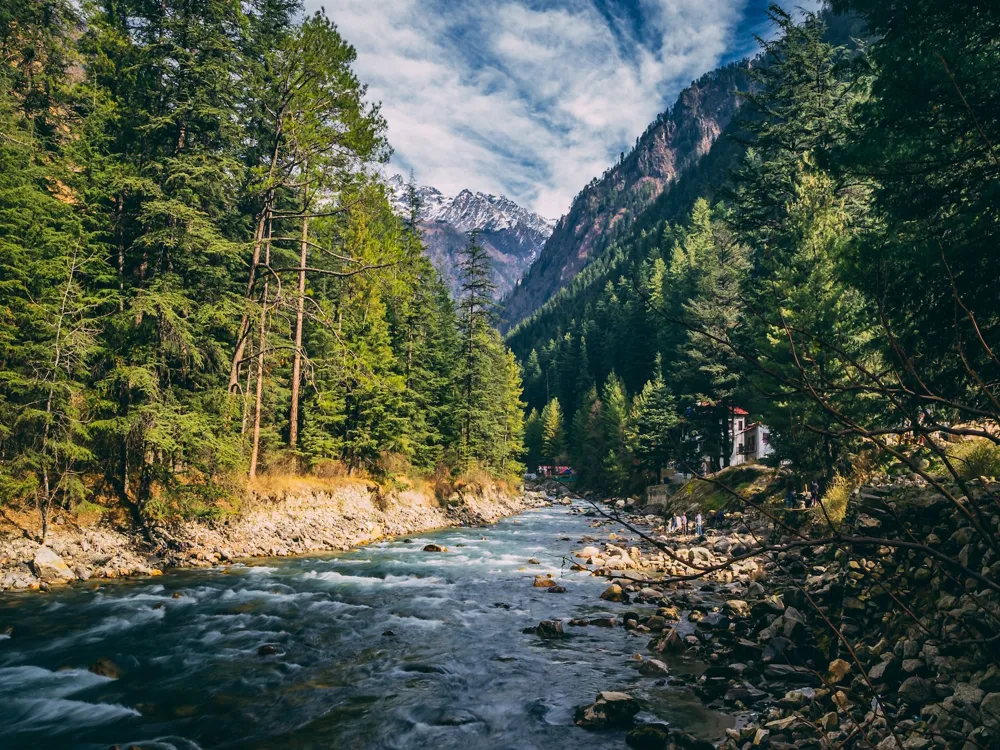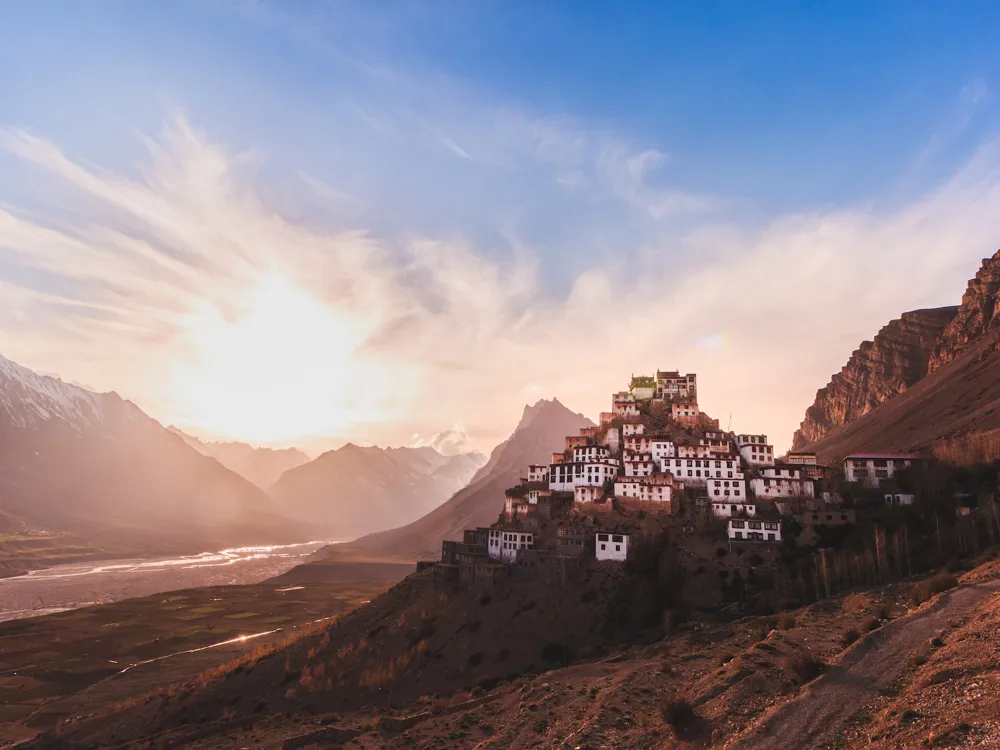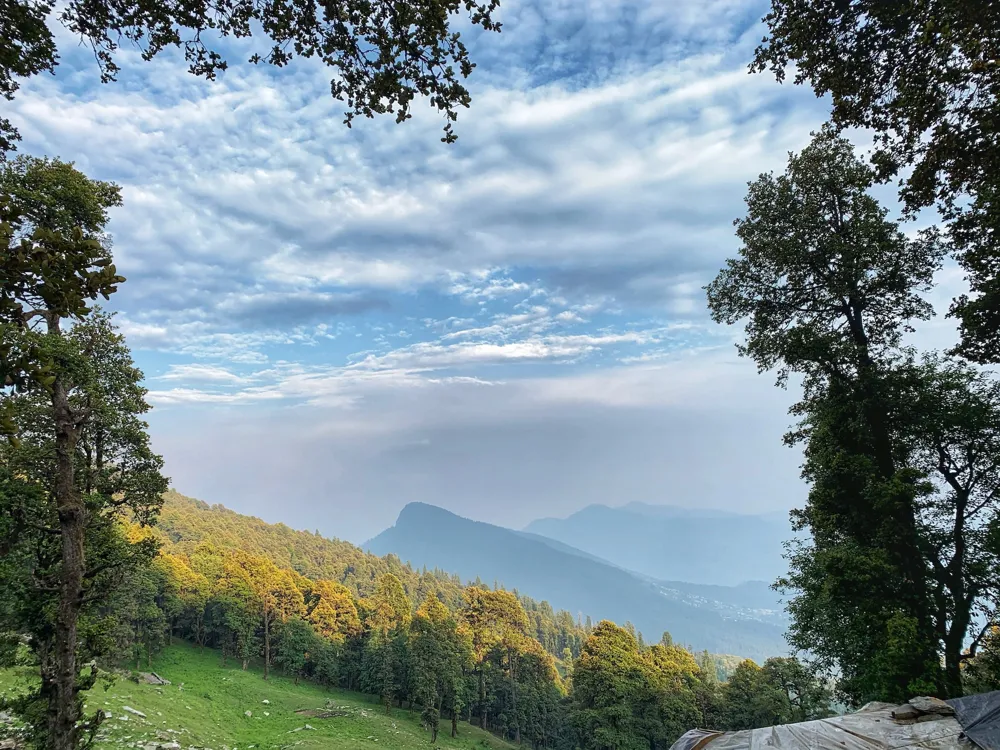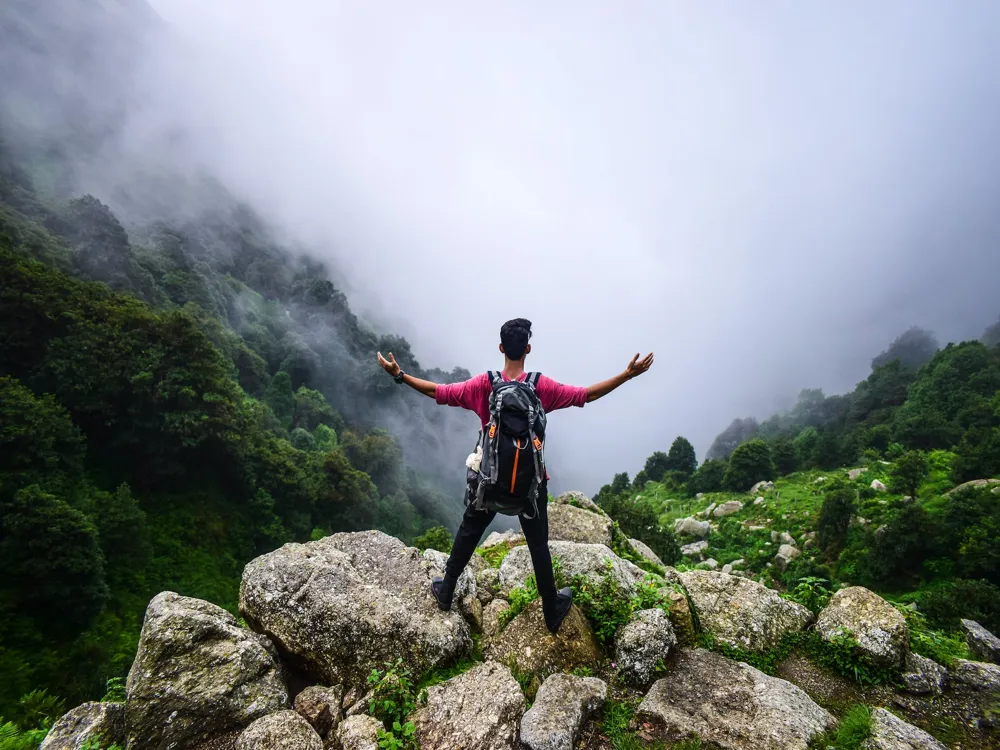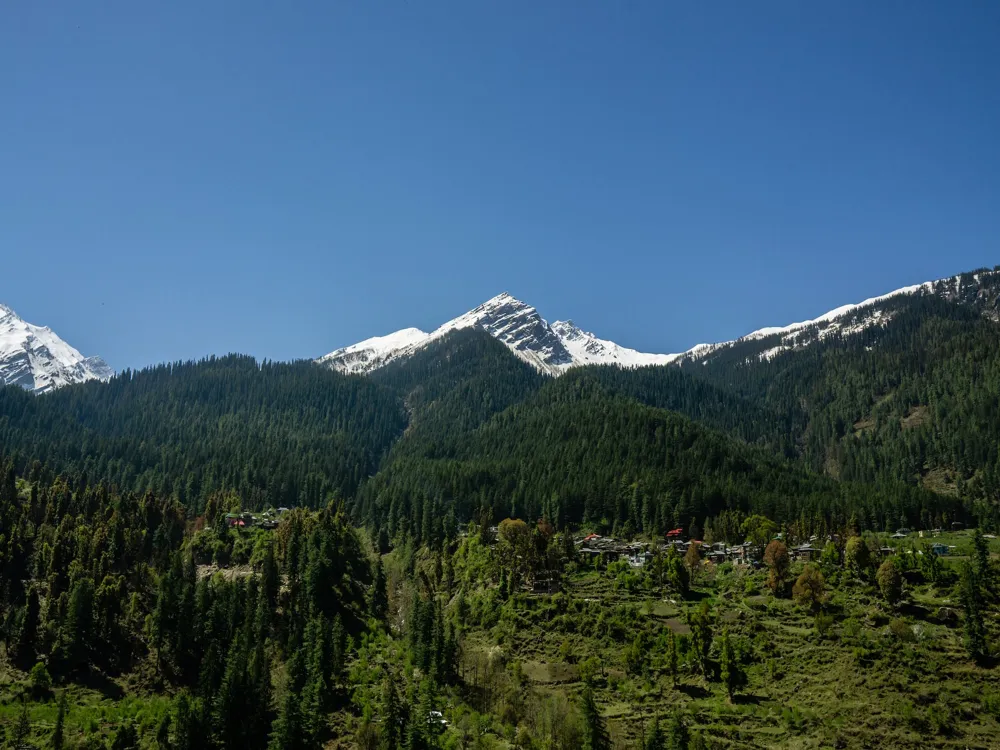Pulga, a serene village nestled in the heart of Parvati Valley in Himachal Pradesh, India, is a hidden gem waiting to be discovered. This quaint village, surrounded by lush forests and the majestic Himalayas, offers a tranquil retreat from the hustle and bustle of city life. Pulga is not just a destination; it's an experience, an adventure into the heart of nature and traditional Himachali culture. The journey to Pulga is as mesmerizing as the destination itself. As you traverse through the winding roads of Parvati Valley, you are greeted with spectacular views of verdant hills and gushing rivers. The air gets fresher, the scenery more picturesque, and the vibe more peaceful as you approach Pulga. This village is a sanctuary for backpackers, nature lovers, and anyone seeking a spiritual sojourn. The beauty of Pulga lies in its simplicity and untouched natural surroundings. The village is a starting point for numerous treks, including the famous Kheerganga trek. The trails leading out of Pulga meander through dense forests of pine and deodar, opening up to expansive meadows and offering breathtaking views of the Himalayan peaks. The flora and fauna here are as diverse as they are abundant, making it a paradise for bird watchers and wildlife enthusiasts. Apart from its natural beauty, Pulga is steeped in cultural richness. The locals, with their warm smiles and hospitable nature, are the heart and soul of the village. Their traditional Himachali homes, cuisine, and way of life offer a glimpse into the authentic mountain lifestyle. The village is also known for its apple orchards and organic farming practices, which are integral to the local economy and lifestyle. The architecture of Pulga is a fascinating amalgamation of traditional Himachali styles and modern influences. The village, though small, showcases a unique architectural heritage that reflects the history and culture of Himachal Pradesh. One of the most striking features of Pulga's architecture is the use of locally sourced materials, which not only gives the buildings a rustic charm but also speaks of the community's sustainable practices. The traditional houses in Pulga, known as 'Kath Kuni,' are an architectural marvel. These houses are made using a unique technique that involves interlocking wooden logs and stones without the use of nails. This method provides excellent insulation, keeping the homes warm during the harsh winters and cool during the summers. The roofs are typically made of slate, which is abundant in the region, adding to the aesthetic appeal of these structures. The ideal time to visit Pulga is from April to October. During these months, the weather is pleasant, with minimal rainfall, allowing for comfortable trekking and exploration. Winters in Pulga can be harsh, with heavy snowfall, making it challenging for travel and outdoor activities. When visiting Pulga, it's essential to pack light but smart. Essentials include warm clothing, comfortable trekking shoes, a first-aid kit, a flashlight, and a power bank. Don't forget to carry a water bottle and some snacks for your treks. Respecting local customs and traditions is paramount. Dress modestly, greet locals with a smile, and always ask for permission before taking photos. Participating in local festivals and trying out traditional cuisine can enrich your experience. Pulga offers a range of accommodation options, from homestays to guesthouses. Staying in a homestay can provide a more authentic experience, allowing you to interact with locals and enjoy home-cooked meals. Always stay on marked trails while trekking and be aware of your surroundings. Carry a small first-aid kit for emergencies. It's also advisable to inform someone about your trekking plans and expected return time. Reaching Pulga involves a combination of road and foot travel. The nearest airport is in Bhuntar, from where you can take a bus or taxi to Kasol. From Kasol, it's a scenic drive to Barshaini, the last motorable point. From Barshaini, a short trek of about 3 kilometers leads you to the enchanting village of Pulga. Public transport is readily available from major cities like Delhi and Chandigarh to Kasol. Once in Kasol, local buses and taxis can take you to Barshaini. The trek from Barshaini to Pulga is relatively easy and can be undertaken by trekkers of all skill levels. The path is well-marked and offers stunning views of the valley. Read More:Overview of Pulga in Parvati Valley, Himachal Pradesh
Architecture of Pulga
Tips When Visiting Pulga
Best Time to Visit
Packing Essentials
Local Etiquette and Culture
Accommodation Choices
Health and Safety
How To Reach Pulga
Pulga
Parvati Valley
Himachal Pradesh
NaN onwards
View parvati-valley Packages
Weather :
Tags : Hills & Valleys
Planning a Trip? Ask Your Question
Parvati-valley Travel Packages
View All Packages For Parvati-valley
Top Hotel Collections for Parvati-valley

Private Pool

Luxury Hotels

5-Star Hotels

Pet Friendly
Top Hotels Near Parvati-valley
Other Top Ranking Places In Parvati-valley
View All Places To Visit In parvati-valley
View parvati-valley Packages
Weather :
Tags : Hills & Valleys
Planning a Trip? Ask Your Question
Parvati-valley Travel Packages
View All Packages For Parvati-valley
Top Hotel Collections for Parvati-valley

Private Pool

Luxury Hotels

5-Star Hotels

Pet Friendly











